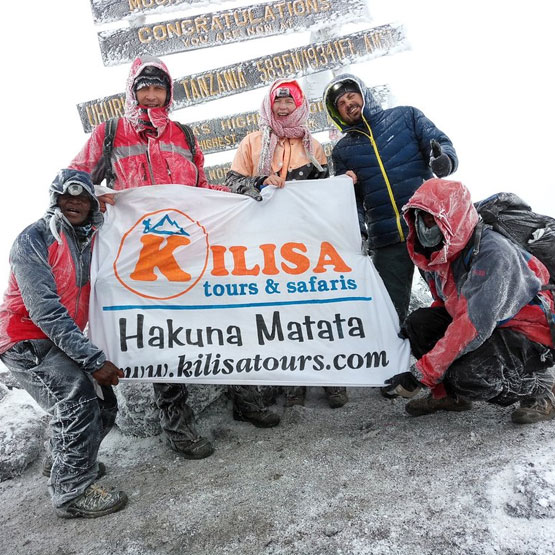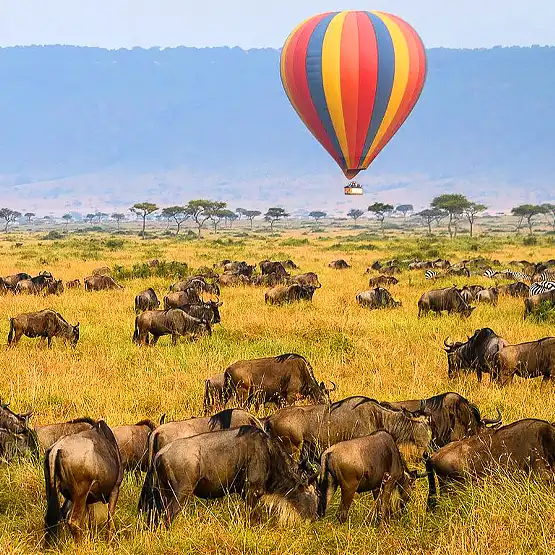Picture yourself in a land where ancient traditions and modern-day life coexist harmoniously—the home of the Hadzabe Hunter-Gatherers. These indigenous people have preserved their unique way of life despite the rapid changes around them. One might wonder, when is the best time to visit these resilient and resourceful people to truly experience their remarkable culture?
For an immersive experience, plan your visit during the dry season, typically between June and October. This period offers ideal weather conditions, making it easier to travel around and engage with the Hadzabe communities. Additionally, the dry season enhances visibility within their habitat, providing better opportunities to witness their hunting and gathering practices firsthand.
- June to October: Ideal weather conditions.
- Clear skies and minimal rainfall for travel and activities.
- Better wildlife visibility as animals gather around water sources.
- Easier to observe Hadzabe hunting and gathering practices.
Best Time of Year to Visit the Hadzabe Hunter-Gatherers
To truly experience the way of life of the Hadzabe Hunter-Gatherers, timing your visit just right is crucial. The dry season, spanning from June to October, is often considered the best. During these months, the weather is more predictable and pleasant for travelers. Also, trekking through their territory is easier without the heavy rains. According to this post, this period offers prime conditions for experiencing Tanzania’s unique landscapes.
June through October also coincides with a time when wildlife is more visible. The dry season forces animals to gather around water sources, making sightings more frequent and exciting. This means an added bonus for visitors: not only do they get to engage with the Hadzabe, but they also have prime opportunities for wildlife viewing.
The Hadzabe people tend to follow seasonal patterns in their daily lives, which visitors can observe more easily during the dry season. This is when they engage more in hunting and gathering activities, giving visitors a better chance to see their traditional practices up close. It’s a captivating look into a way of life that has remained unchanged for thousands of years.
While the dry season offers numerous advantages, other months have their perks too. The wet season, though more challenging to navigate, brings vibrant greenery and a different type of beauty to the landscape. For those who prefer a quieter experience with fewer tourists around, visiting during the rainy period can offer a more intimate glimpse into the Hadzabe’s world.
1. Understanding the Seasonal Weather Patterns
The Hadzabe live in an area with distinct seasonal weather patterns. The dry season runs from June to October, offering clear skies and minimal rainfall. This period makes travel and outdoor activities more comfortable for visitors. November to March marks the wet season when rainfall is more frequent. Understanding these patterns helps plan your trip better to the Hadzabe communities.
During the dry season, rivers and water sources shrink, making wildlife more visible. Animals congregate around the remaining water, enhancing your chances to see them up close. This weather also allows the Hadzabe easier access to hunting grounds. Tour guides often prefer this season because it makes navigating through the terrain simpler.
The wet season transforms the landscape into a lush, green paradise. However, it can also bring challenges such as muddy paths and swollen rivers. This doesn’t mean it’s a bad time to visit, though. For those who enjoy fewer crowds, the rainy season offers a quieter experience. You’ll witness a different aspect of the Hadzabe lifestyle, as they adapt their activities to the wetter conditions.
Weather patterns directly influence the daily lives of the Hadzabe people. During each season, they adjust their hunting and gathering strategies. This adaptation is a critical part of their survival and culture. By understanding these weather changes, visitors can plan a trip that aligns with their interests. It also helps ensure a more enjoyable and educational experience.
2. Importance of Wildlife Movements
Wildlife movements play a significant role in the daily lives of the Hadzabe Hunter-Gatherers. Animals such as zebras, gazelles, and buffaloes migrate across the region, impacting where the Hadzabe hunt. These movements are influenced by seasonal changes, making certain times of the year more fruitful for hunting. Recognizing these patterns helps visitors understand when and why the Hadzabe might move to different areas. It adds a layer of depth to the cultural experience.
The wet season brings an abundance of food and water, which affects local wildlife. Animals spread out over larger areas, making them harder to track. Conversely, the dry season forces animals to congregate around limited water sources. This makes it easier for both the Hadzabe and visitors to spot various species. It’s a fascinating aspect of their interaction with the natural environment.
Observing wildlife movements enhances your understanding of the Hadzabe’s resourcefulness. They have developed sophisticated strategies to follow and hunt these animals throughout the changing seasons. Visitors can learn a great deal by seeing how the Hadzabe adapt to these patterns. This knowledge helps in grasping the intricacies of their survival tactics.
For photography enthusiasts, wildlife movements offer excellent opportunities for capturing stunning images. You can witness herds of animals migrating and predators on the prowl. By timing your visit with these movements, you can make the most of your wildlife observation experience. Additionally, seeing diverse species in their natural habitat makes the trip even more memorable.
3. Cultural Activities and Traditions
Visiting the Hadzabe Hunter-Gatherers provides a unique opportunity to witness age-old cultural activities and traditions. One of the most fascinating aspects is their hunting techniques, which have remained largely unchanged for thousands of years. Visitors can observe how they use bows and arrows to hunt game, showcasing their exceptional skills and knowledge of the land. Their ability to track animals in difficult terrain is impressive. It’s a living history lesson.
The Hadzabe also engage in gathering various wild plants, fruits, and honey. These activities are pivotal to their diet and survival. Women and children often participate in gathering, making it a communal effort. You can join them in foraging and learn about the medicinal uses of different plants. This hands-on experience is both educational and enjoyable.
Storytelling is another significant tradition among the Hadzabe. In the evenings, they gather around the fire to share stories and songs passed down through generations. This practice is essential for preserving their culture and teaching younger members about their heritage. Visitors are often welcomed to listen and even participate. It’s a wonderful way to connect with their rich oral history.
The Hadzabe’s traditional dances and ceremonies offer a glimpse into their spiritual beliefs and social structures. Special occasions like weddings and harvests are marked with vibrant dances and rituals. These events are filled with rhythmic drumming and energetic movements, creating a festive atmosphere. Being part of such celebrations is a rare and enriching experience.
Art and craftsmanship also play an important role in Hadzabe culture. They create beautiful beadwork, tools, and ornaments from natural materials. These items are not only functional but also symbolic, representing various aspects of their life and environment. Visitors can see these creations up close and even purchase some as souvenirs. Supporting their crafts helps sustain their traditional lifestyle.
4. Tour Availability and Accessibility with Kilisa Tours
Kilisa Tours offers tailored trips that allow you to experience the Hadzabe Hunter-Gatherers up close. Their tours are designed to accommodate various schedules and preferences. Whether you are looking for a short day trip or an extended stay, they have options to suit every traveler. Guided by knowledgeable experts, these tours provide deep insights into Hadzabe life. It’s an excellent way to ensure a memorable and educational experience.
The accessibility of these tours is noteworthy. Kilisa Tours ensures that even remote areas are reachable without much hassle. Comfortable transport options are included, making the journey smoother for visitors. With well-planned itineraries, you can maximize your time with the Hadzabe. This includes immersive activities like hunting, gathering, and interacting with the community.
Booking a tour is straightforward through Kilisa Tours’ website. They offer various packages that include meals, accommodations, and transportation. This convenience takes the stress out of planning, allowing you to focus on enjoying the trip. Customizable options are available to meet individual needs. This flexibility ensures that every visitor gets a unique and personalized experience.
Safety is a priority for Kilisa Tours. They ensure that all activities adhere to safety guidelines and respect for the Hadzabe community. Expert guides are trained in first aid and knowledgeable about the local area. This gives visitors peace of mind while exploring the wilderness. You can experience the authentic lifestyle of the Hadzabe without compromising safety.
Engaging in a tour with Kilisa Tours supports sustainable tourism. They work closely with the Hadzabe community to ensure that tourism benefits them directly. This helps preserve their culture and way of life. By choosing Kilisa Tours, you contribute to these efforts. It’s a win-win situation for both travelers and the Hadzabe community.
5. Tips for Sustainable and Respectful Travel
Traveling sustainably means being mindful of your environmental impact. One way to do this is by minimizing waste and using reusable items. Bring a reusable water bottle and avoid single-use plastics. Choose eco-friendly products that won’t harm the environment. This not only helps protect nature but also sets a good example for others.
Respecting local customs and traditions is crucial when visiting the Hadzabe community. Learn about their culture before your trip to understand their way of life. Dress modestly and follow any guidelines given by your tour guide. Always ask for permission before taking photographs. Showing respect fosters positive interactions and mutual respect.
Supporting local economies is another important aspect of sustainable travel. Buy locally made products and crafts to help boost the community’s income. This encourages the preservation of traditional skills and practices. Opt for local guides and accommodations whenever possible. Your choices can make a significant difference in the community’s well-being.
Engage in activities that promote environmental conservation. Participate in tree-planting or clean-up projects to give back to the environment. Avoid disturbing wildlife and stick to designated paths. These actions help preserve the natural habitat for future generations. Your efforts contribute to the overall sustainability of the region.
Lastly, support organizations and tour companies that prioritize sustainable practices. Kilisa Tours, for example, emphasizes eco-friendly and respectful travel experiences. They work closely with local communities to ensure tourism has a positive impact. By choosing such companies, you help promote responsible tourism. It’s a meaningful way to enjoy your trip while benefiting the environment and local people.
Optimal Months for Cultural Engagement and Learning
The best months for cultural engagement with the Hadzabe Hunter-Gatherers are June to October. These months fall within the dry season, which offers better weather and accessibility. The clear skies and warm days make it an ideal time to participate in outdoor activities. The lack of rain also means fewer travel disruptions. These conditions are perfect for learning about Hadzabe culture firsthand.
During these optimal months, the Hadzabe are more active in their traditional practices. Hunting and gathering activities are easier to observe because of favorable weather conditions. This allows visitors to see their skills in tracking game and foraging. Observing these activities provides a deep understanding of their way of life. It’s like stepping into a living history book.
According to the article, this period also coincides with numerous cultural festivals and events. Participating in these gatherings offers additional insights into Hadzabe traditions. You might witness special dances, rituals, or storytelling sessions around the fire. These experiences provide visitors with a richer cultural immersion.
The presence of other wildlife during this time enhances the overall experience as well. As animals gather around water sources, visitors can enjoy both cultural and wildlife interactions. This dual focus enriches your journey, making it more memorable and educational. Wildlife sightings add an exciting layer to the exploration of Hadzabe territory.
If you plan your visit diligently within these months, you have every chance for a balanced trip where education meets adventure seamlessly, powered by favorable conditions that maximize engagement with both nature and culture effectively.
Why Visiting During the Dry Season Enhances Your Experience
Visiting the Hadzabe Hunter-Gatherers during the dry season significantly enhances your overall experience. The clear skies and predictable weather make it ideal for outdoor activities. You can trek through their traditional territories without worrying about heavy rains. This weather allows easy access to various parts of the Hadzabe lands. Moreover, it ensures that your plans are less likely to be disrupted.
The dry season also improves the visibility and accessibility of the wildlife in the area. Animals gather around limited water sources, making sightings more frequent and thrilling. This means you’ll have more opportunities to see the wildlife that plays a crucial role in Hadzabe life. Watching these animals interact with their environment adds an educational dimension to your visit. It’s an experience that combines both cultural and natural learning.
Another benefit of visiting during the dry season is the chance to see the Hadzabe in their most active period of hunting and gathering. The dry conditions make it easier for them to move around and find food. You can observe the Hadzabe’s traditional practices firsthand, from tracking game to gathering edible plants. This provides a deeper understanding of their survival techniques and daily routines. It’s a unique glimpse into an enduring way of life.
Comfort is another factor that enhances your experience during the dry season. The warm but not excessively hot temperatures make outdoor activities pleasant. Camping and hiking become more enjoyable experiences without the discomfort of humidity or rain. This comfort allows you to focus entirely on the cultural immersion and the learning opportunities available. It’s a win-win for both adventure and education.
In addition, the dry season often leads to better group tours and community interactions, as conditions are more favorable for large gatherings. Events and cultural demonstrations are scheduled more frequently, enriching your trip even further. You get to partake in vibrant festivals and rituals that may not occur during the wet season. This makes your visit not only more convenient but also culturally enriching.
Key Considerations When Planning Your Visit
When planning your visit to the Hadzabe Hunter-Gatherers, timing is one of the first things to consider. The dry season, from June to October, offers the best weather conditions for travel and outdoor activities. This period is ideal for engaging fully in the Hadzabe’s traditional practices. Be sure to book your trip well in advance, as this time is popular among travelers. Early planning ensures you secure the best tour packages and accommodations.
Another crucial consideration is packing appropriately for the climate. Comfortable, breathable clothing is essential for the dry season’s warm temperatures. Don’t forget sturdy walking shoes for trekking through the landscape. Bringing items like a reusable water bottle and eco-friendly toiletries can also help make your trip more sustainable. Packing smartly enhances your comfort and convenience throughout your visit.
Respect for the Hadzabe community and their customs is paramount. Before you go, take some time to learn about their traditions and way of life. This preparation ensures that your actions are respectful and considerate. Following guidelines provided by your tour guide will help you interact appropriately with the Hadzabe people. Respectful behavior fosters a meaningful and positive experience for everyone involved.
Health and safety measures are also important. Ensure that all necessary vaccinations and medications are up to date before traveling. Carry a first aid kit and any personal medications you may need. It’s always wise to have travel insurance to cover any unexpected situations. These precautions help you stay safe and healthy during your trip.
Lastly, consider how you can contribute positively to the local community. Purchase local goods and crafts to support the Hadzabe’s economy. Participating in eco-friendly tourism activities ensures that your visit has a minimal environmental impact. By making conscious choices, you help preserve the Hadzabe’s way of life and the natural beauty of their homeland. Your thoughtful approach can make a significant difference.
Insights from Past Visitors: Testimonials and Recommendations
Past visitors to the Hadzabe Hunter-Gatherers often highlight their enriching experiences. Many have described the trip as a life-changing event, deeply appreciating the genuine interactions with the Hadzabe people. One visitor noted, “Witnessing their hunting skills was like stepping back in time. It’s unforgettable.” This sentiment is echoed by many who felt privileged to observe their traditional lifestyle up close.
Another common recommendation from past travelers is to prepare for the physical aspects of the trip. “The treks can be challenging, but they’re worth every step,” shared a visitor. Comfortable shoes and a good level of fitness are essential. This preparation ensures you can fully participate in the day’s activities. Engaging physically adds to the immersive experience.
Visitors frequently advise respecting the community and its way of life. “Learning about the Hadzabe beforehand helped me interact more respectfully,” another traveler shared. Following this advice enriches your engagement with the Hadzabe people. This enhances mutual respect and understanding during your visit. It makes the experience more meaningful.
Many travelers also suggest taking advantage of local guides to deepen your understanding of Hadzabe culture. “Our guide was incredibly knowledgeable, explaining each aspect of their way of life,” mentioned one visitor. Local guides can provide valuable insights that you might miss on your own. Their expertise can truly bring the experience to life.
A key highlight from testimonials is the value of witnessing Hadzabe traditions and rituals. “Joining in their storytelling sessions around the fire was magical,” said a visitor. Participating in these cultural practices gives a deeper appreciation for their heritage. It is an experience that many find deeply moving and educational.
Overall, past visitors strongly recommend this trip for anyone interested in learning about ancient cultures. Preparing well and maintaining respect for the Hadzabe community can lead to an enriching and unforgettable journey. Their testimonials and recommendations highlight the importance of immersive, respectful travel. These insights offer a helpful guide for future visitors.







